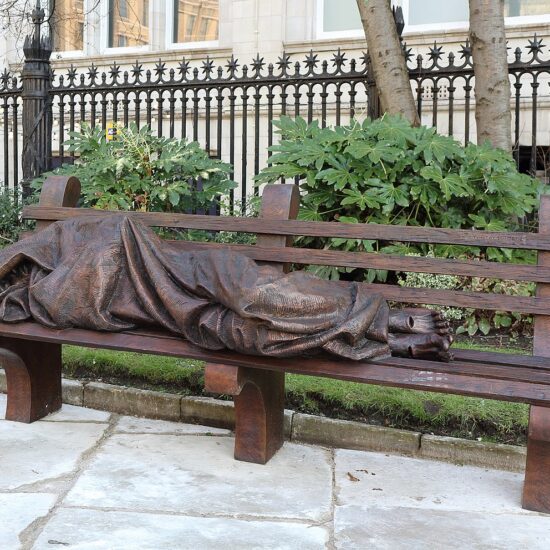Not only do social safety nets “play a pivotal role” in reducing poverty and lowering income inequality but they also have been demonstrated to be effective in doing so.
These are two key assertions in the World Bank Group’s “The State of Social Safety Nets 2018” report released on April 4.
 In nations where social safety net (SSN) / social assistance (SA) programs are readily available, poverty reduction efforts have been significant, while progress has been minimal in nations where the programs are limited. (Pixabay)“Social safety net (SSN) / social assistance (SA) programs are noncontributory interventions designed to help individuals and households cope with chronic poverty, destitution and vulnerability,” the report explained. “SSN/SA programs target the poor and vulnerable. Examples include unconditional and conditional cash transfers, noncontributory social pensions, food and in-kind transfers, school feeding programs, public works and fee waivers.”
In nations where social safety net (SSN) / social assistance (SA) programs are readily available, poverty reduction efforts have been significant, while progress has been minimal in nations where the programs are limited. (Pixabay)“Social safety net (SSN) / social assistance (SA) programs are noncontributory interventions designed to help individuals and households cope with chronic poverty, destitution and vulnerability,” the report explained. “SSN/SA programs target the poor and vulnerable. Examples include unconditional and conditional cash transfers, noncontributory social pensions, food and in-kind transfers, school feeding programs, public works and fee waivers.”
The global average for SSN/SA program spending in developing nations is 1.54 percent of gross domestic product (GDP), with Europe and Central Asia spending the most (2.2 percent) and South Asia spending the least (0.9 percent).
SSN/SA spending in higher-income nations (1.9 percent of GDP) and upper-middle-income nations (1.6 percent) is only marginally higher than that of lower-income nations (1.5 percent) and lower-middle-income nations (1.4 percent).
One SSN/SA program is cash transfers, which are monetary transfers made directly to persons in need. A detailed explanation is available here.
“SSN [cash] transfers reduce the absolute poverty gap by 45 percent and the relative poverty gap by 16 percent,” World Bank reported.
Relative poverty is defined as “individuals in the poorest 20 percent of the welfare distribution” in a nation, while absolute poverty refers to “individuals living on less than $1.90 purchasing power parity a day.”
“These results are remarkable considering that these figures are underestimated because household surveys do not capture the whole universe of SSN programs implemented in those countries. Therefore, it can be inferred that the real impacts are likely to be even larger,” the report added.
Significant progress has been made in recent years to increase the size and reach of SSN/SA programs globally, yet “significant gaps” remain.
“These gaps are especially pronounced in low-income countries, where only 18 percent of the poorest quintile are covered by SSN programs,” World Bank observed. “Even in lower-middle-income countries, less than 50 percent of the poor have access to SSN programs.”
By comparison, high-income nations cover 76 percent of the poor. The global average is 45 percent coverage.
In nations where SSN/SA programs are readily available, poverty reduction efforts have been significant, while progress has been minimal in nations where the programs are limited.
“In a volatile world there is strong evidence that social safety net programs can help to build the resilience of poor families and reduce their poverty, making them a vital instrument for the rapid development of countries,” said Annette Dixon, World Bank Group vice president for human development, in a press release announcing the report’s publication. “In the absence of these safety net programs, poor people facing shocks can fall into deeper poverty, often having to sell their remaining assets or borrow more.”
The full report is available here.
This article originally appeared on EthicsDaily.com.






